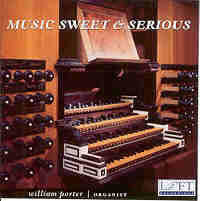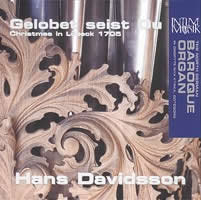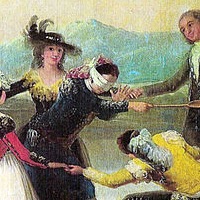Starting in an alcohol-free county in West Texas (before air conditioning or paved roads), W.A. Grieve-Smith tried to obliterate the Great Depression and Dust Bowl by immersing himself in Greek, Latin, Spanish, French and German literature and language study, winding up in the same class as Dr. John Nash at the Princeton Graduate College. Moving to New York, he began writing and producing ads in the fledgling TV medium. For the following 35 years, he recorded sound for commercials, documentaries and features. With the demise of New York film production he switched to teaching at New York University’s Continuing and Professional Studies program, where he initiated the course in location sound recording. During this string of day jobs, he has maintained a lively interest in recordings of Renaissance and Baroque secular and liturgical music.
W.A. Grieve-Smith

La Folia Lost a Dear Companion
W.A. Grieve-Smith, 1928-2004.

Pump and Circumstance
If you’re expecting sugary, syrupy sentimental twaddle, think again!

Pump and Circumstance
If you’re expecting sugary, syrupy sentimental twaddle, think again!

Göteborg’s Latest Duo, and Others
The two most illustrious Hamburg pupils of Jan Pieterszoon Sweelinck share these dazzling demonstration CDs of the amazing variety of colors of the North German Hanseatic organ in the Örgryte nya kyrka at Göteborg.

Göteborg’s Latest Duo, and Others
The two most illustrious Hamburg pupils of Jan Pieterszoon Sweelinck share these dazzling demonstration CDs of the amazing variety of colors of the North German Hanseatic organ in the Örgryte nya kyrka at Göteborg.

Göteborgs Wond’rous Machine
When we think of pipe organs, we usually envision the big tin whistles up front, the prestants or display pipes.

Göteborgs Wond’rous Machine
When we think of pipe organs, we usually envision the big tin whistles up front, the prestants or display pipes.

New Goldbergs and Old Gouldbergs
At last we get rays of sunshine and breaths of fresh air in Mlle. Frisch’s new recording!

New Goldbergs and Old Gouldbergs
At last we get rays of sunshine and breaths of fresh air in Mlle. Frisch’s new recording!

Revolving Doors on Madison Avenue
After studying for a Ph.D. in Greek and Latin, what do you qualify for? Not hardly much in the New York business world of the 1950s. But there was always advertising.

Revolving Doors on Madison Avenue
After studying for a Ph.D. in Greek and Latin, what do you qualify for? Not hardly much in the New York business world of the 1950s. But there was always advertising.

Buxtehude and H. Praetorius
It’s always gratifying to bring worthy new releases of Dietrich Buxtehude (1637-1707) to your attention.

Buxtehude and H. Praetorius
It’s always gratifying to bring worthy new releases of Dietrich Buxtehude (1637-1707) to your attention.

Buxtehude: Vocal Works
To dispel all blues and banish gray clouds, go directly to cut # 3: Nun danket alle Gott…

Buxtehude: Vocal Works
To dispel all blues and banish gray clouds, go directly to cut # 3: Nun danket alle Gott…

The Ugly Truth about Film Sound
My film sound students at an attempted university get upset when I reveal to them that the mono soundtrack of their precious student film has a frequency response from 80 Hz (cycles-per-second) to 8 kHz (8 thousand cycles), slightly better than AM radio, but only slightly.

The Ugly Truth about Film Sound
My film sound students at an attempted university get upset when I reveal to them that the mono soundtrack of their precious student film has a frequency response from 80 Hz (cycles-per-second) to 8 kHz (8 thousand cycles), slightly better than AM radio, but only slightly.

H.I.F. Biber’s Recordings
Biber had Mozart’s job as Kappelmeister at the Salzburg Cathedral under Prince-Archbishop Maximilian Gandolf. Biber’s experience was apparently a happier one than Mozart’s.

H.I.F. Biber’s Recordings
Biber had Mozart’s job as Kappelmeister at the Salzburg Cathedral under Prince-Archbishop Maximilian Gandolf. Biber’s experience was apparently a happier one than Mozart’s.

Thomas Tomkins, the last Elizabethan
By the time Thomas Tomkins died in 1656, he had outlived his contemporaries: Byrd, Bull, Gibbons and Sweelinck, all of whom died in the 1620s. He was by no means an also-ran, however.

Thomas Tomkins, the last Elizabethan
By the time Thomas Tomkins died in 1656, he had outlived his contemporaries: Byrd, Bull, Gibbons and Sweelinck, all of whom died in the 1620s. He was by no means an also-ran, however.